Why do dogs chew their feet? Dogs can lick and chew their paws for a wide variety of reasons. Including boredom, cleaning, or to remove an object. However, a dog chewing on its paws could also indicate a more serious medical conditions. To prevent your dog from chewing their paws, you must identify the reason why.
If you have any doubt, or the paws are becoming damaged, speak to your vet.
Check out our top 11 reasons and how to help below.
Busy? Get Your Hands Paws On The Answers Quickly…
- 1. Cleaning
- 2. Something Stuck
- 3. Dermatitis and Allergic Reactions
- 4. Broken Claw
- 5. Wound
- 6. Fleas and Ticks
- 7. Reinforced Behaviour – OCD, CCD
- 8. Bored
- 9. Ice and Salts
- 10. Anxious
- 11. Other Medical Issues
Dogs clean themselves by licking and nibbling out any pieces of dirt. If you have just been for a muddy walk or your dog has been digging in the yard, then the chances are they will want to clean themselves.
What To Look Out For:
It is an easy one to identify and will include cleaning all four, rather than just focusing on one.
How To Help:
This is perfectly normal, and there is no need to worry about this foot chewing. Once they have cleaned all four paws, they will stop. However, we recommend rinsing off your dog’s paws after coming in from a muddy walk to make sure they’re not bringing anything harmful (or smelly) in with them. It also ensures they don’t ingest anything stuck in their paws.
Paws can be a trap for plants and small objects. The fur surrounding can easily catch a bur or grass seed when out for a walk. Snail shells, small rocks, and other foreign objects can also get stuck.
What To Look Out For:
If this is the case, your dog will consistently chew and lick the paw it is affecting until it is removed. They may also limp, hobble, or hold their effected leg up off the ground.
How To Help:
If you notice this behavior, inspect the paw thoroughly, checking the fur around. If you are able to remove it easily, do so, you may need the help of tweezers. Once the object is removed, rinse the area with warm water.
3. DERMATITIS AND ALLERGIC REACTIONS
Atopic dermatitis is an allergic reaction to something common, like dust, grass, pollen, etc. This can cause severe itching, scratching, and chewing. All of which can cause infection and inflammation.
Dogs, like humans, can be allergic to just about anything. From the food they’re eating, the grass they’re playing in, or the carpet they’re sleeping on.
Identifying the cause can be tricky; a vet can do an allergy test. However, this can prove expensive and sometimes inconclusive. Many people prefer to try and eliminate things to try and work out the trigger themselves.
What To Look Out For:
Usually, your dog will seem generally itchy. They may gnaw on not just their paws, but also their limbs. Scratching their ears, armpits, and face can also all be indicators. They can scratch their skin, biting off the fur and causing raw, inflamed skin. Other severe reactions can also include swelling and gastrointestinal issues, including vomiting and diarrhea.
How To Help:
Firstly, the cause of the reaction needs to be identified. Check out the most common ones below and how to prevent them.
Grass and pollen – During the spring and summer months, dogs can experience a reaction to grass pollen, causing itching. This can cause excess chewing of the paws. To prevent this, make sure you wash off your dog’s paws after each walk with warm soapy water.
Food allergen (e.g., chicken, wheat, soy, dairy) – Food allergies are common in dogs. By either eliminating and reintroducing foods slowly or working with a vet, you should be able to identify the cause. Once identified, this needs to be obliterated from your dog’s diet. We recommend natural and organic food.
Dust – Just like humans, dogs can be allergic to dust. Keep the carpets clean and make sure to wash their bedding, blankets, and toys regularly.
Medication – Dogs can be allergic to prescription drugs. If your dog is showing any of the symptoms listed whilst on medication, it is worth discussing with your vet.
Shampoo – Dogs can be allergic or reactive to ingredients in soaps and shampoos. If you notice that your dog is itching or excessively licking and chewing their paws after visiting the groomers, then discuss with your groomer the shampoo or sprays used.
Cleaning supplies and detergent – Consider switching up your cleaning cupboard if you’re finding your dog itching after using.
Immunotherapy is also an option for dogs, this treatment is designed to introduce the allergen gradually to build up immunity and make dogs less sensitive. This treatment can be discussed with a vet.
Broken claws can be painful and can cause severe issues if left untreated. They can become infected and begin to swell. Dogs will lick the claw in an attempt to heal it and soothe the pain. However, this can cause more damage.
Claws can become broken quite easily, especially the dewclaw (located on the inner side of the leg), as it is more loosely attached. The most common way for nails to break is during cutting. If the dog pulls away, moves, or cut incorrectly, the nail can break or split.
However, long claws also pose a high breaking risk. They can break while running and jumping, particularly on hard surfaces or by catching on fabric.
Ensure your dog’s nails are kept short. When cutting make sure you have the correct size nail trimmers and that they are sharp enough. Make sure that your dog doesn’t move during cutting or that you cut the nails too short, as it can be incredibly painful if you catch the ‘quick.’ The quick is the portion of the nail, which contains blood vessels and nerves with the actual nail over the top.
Local groomers and vets are also able to help with nail trimming if you are not confident to do it yourself.
What To Look Out For:
As well as your dog licking and chewing at the paw, he may limp or whine in pain. There may also be blood around the claw or leaving a trail as they walk.
How To Help:
If your dog has broken a claw, the broken part will need to be removed. This can be incredibly painful for a dog, and we recommend the procedure be carried out by a vet. Once removed, it will usually need to be kept clean to prevent infection while waiting for regrowth. Your vet will be able to advise the best way to do so.
In the meantime, you can control the bleeding by wrapping the paw in gauze and bandage and using a cone to stop your dog from licking or chewing the nail, potentially causing infection.
Paws take the impact of everyday life for a dog, from standing, walking, running, jumping, swimming, and playing. They have the most robust skin but can become injured quite easily. The injuries could be burning, freezing, lacerations, abrasions, etc.
What To Look Out For:
Along with licking and chewing the injury, dogs can struggle to walk on an injured paw and may show signs of distress. The paw can also discolor and swell.
How To Help:
This will depend on the size and state of the wound. Dogs can also become aggressive when they feel threatened, so think about using a muzzle before inspecting an injury. If you are unsure about the damage, uncomfortable treating it, suspect an infection, notice it doesn’t seem to be healing, or there is any swelling, we recommend visiting a vet.
For small cuts and abrasions, carefully clean the wound with an antibacterial wash and cover with a bandage. The bandage will need to be changed regularly to keep it clean.
Deeper cuts or lacerations may require stitches. If the wound doesn’t seem to be healing, contact your vet.
Burning the pads can happen on hot floors, like sand or on the sidewalk. If the pad is burnt, it can come loose or detached. Soothe the burn with cool, clean water. Keep the area clean and covered until it’s healed.
If it is a chemical burn, then the paw will need to be flushed with clean water. We also recommend contacting a vet with any chemical injuries.
6. FLEAS AND TICKS
Fleas and ticks can easily be picked up during walks from the woodlands, as well as be passed from other animals. They can be irritating but also can have more serious effects, such as causing worms and anemia.
What To Look For:
Scabs and hot spots can be signs, along with excessive scratching and biting. Fleas can also cause anemia in pets due to their blood intake. Anemia is associated with a lack of energy and pale gums. You may also be able to see the fleas, eggs, and feces left behind on your dog’s fur.
How To Help:
Treatments are readily available in pet stores, which remove ticks and fleas quickly. You are also able to buy regular treatments that keep fleas, ticks, and worms at bay to prevent any further infestations.
If you have other pets, including cats in the home, make sure they are treated too. They will need their own treatment as dog and cat flea repellent cannot be mixed.
Ensure you also treat your home as fleas can lay eggs in your bedding, carpet, and other soft furnishings. Ensure you wash your bedding regularly, vacuum, and generally keep the house clean.
7. REINFORCED BEHAVIOUR – OCD, CCD
Obsessive/Canine compulsive disorder is a repetition of behavior outside of context. This could include hallucinating, air biting, tail chasing, spinning, licking, chewing. These behaviors are associated with normal function for dogs but become OCD when they are repeated and interrupt normal life. OCD can be genetic, neurological, environmental, or behavioral. Or a combination of them all.
Illness, neglect, lack of routine, limited exercise, confinement, and abuse can all be factors as to why a dog would develop OCD.
What To Look For:
If your dog is excessively licking and chewing their paws when they are not dirty, not damaged, and for no apparent reason, it could be a sign of OCD. Many dogs with one OCD trigger, often develop another. It is not uncommon for a dog to display multiple of the ones listed above. Licking can also be satisfying and soothing for dogs, so this can quickly turn from a relaxing habit to a disorder.
How To Help:
Ensuring your dog has a routine and is well exercised, socialized, comfortable, and happy is vital. You can also distract your dog from the with toys and fun games. Using treat-dispensing balls, or toys you can stuff with peanut butter help to refocus the obsessive paw licking onto something else. This should all help your dog from the excess paw chewing and licking. A stimulated and exercised dog tends to be a happy one.
If this fails, contact a behavior therapist. They will be able to assess your dog and make suggestions to help stop the paw chewing.
Some dogs will become more bored than others. Those with higher levels of energy and intelligence can easily become bored if they are not exercised enough, and they are not able to stimulate their minds. If you’re out of the house, leaving your dog alone, for long periods, it is very common to come home to a bored and excited dog.
Boredom has been found as a state of stress. This stress increases the level of cortisol in the body. The cortisol is a stress hormone, and as we learned earlier, dogs find licking soothing. So by licking, grooming, and chewing their paws, they can relieve some of the stress.
What To Look For:
As well as chewing or licking their paws, dogs may show other signs of boredom. Such as destroying things (furniture, toys, rugs, etc.), pacing, digging, and barking excessively.
How To Help:
There are many ways to tire and stimulate your dogs, and these are our top 5 ways:
Physical exercise – Whether you decide to increase your morning walk before work, or hire a dog walker to do the same. We recommend giving your dog at least the recommended amount of physical exercise per day. Throwing a ball or frisbee will also help burn off the extra energy.
Mental stimulation – Teaching new commands is a great way to help tire out dogs. Not only do they need physical stimulation, but it helps to get their brains working too.
Socialization – Enrolling in an agility class, training school, or doggy daycare are all great ways to tire out a bored dog. Mixing with new dogs is great for learning, and taking them to new places is always exciting.
Toys – Having the same toys every day becomes tiresome. Switch out your dog’s toys, keeping them on rotation keeps them more exciting, and it’s like having a whole new toy box every day. You can buy interactive and stimulating toys that make a dog work for treats. You can make toys out of old household objects. For example, we use empty water bottles to put treats in. The dog has to move the bottle around to try and shake them out.
Chewing – Bones, antlers, kongs, and teething sticks are all great ways to distract your dog and can keep them entertained for hours. Stuffing the kong with treats works well, we like to use mashed sweet potato and carrot inside, or mix their kibble with water and freeze it so that they can lick it. As we saw earlier, licking helps reduce stress and boredom.
When the ground is frosty or snowy, snow and ice can cut through dog paws. Water can also get trapped, and the temperature of the paws melts it, and then it refreezes within their paw pads, tugging on the fur and spreading the pad. This can cause cuts and discomfort. Salts used to grit roads can cause chemical burns on the paw pads. Deicer is also known to be toxic to dogs. All of these can give a dog reason to chew at their feet.
How To Help:
Wash the paws – Check your dog’s paws after a walk for any ice balls. We also recommend washing their paws off with warm, soapy water after being in the snow to altogether remove and toxic chemicals that may have been laid in the snow.
Trimmed fur – Keep your dog’s fur-trimmed between their paw pads. This makes it more difficult for the ice to freeze on the fur. If your dog will wear booties, this is also an option. Many dogs, however, are not good at walking in booties.
Stay off the grit – If possible, keep your dog off of salt and gritted roads. Playing in the yard opposed to a walk could work well, or keeping them on the grass of the sidewalk as opposed to paving may also help.
Bring your dog inside – If you have a dog who is usually kept outside, bring them into the warm if temperatures are really low.
Licking and chewing help relieve stress, as we saw earlier. This motion helps to soothe and comfort themselves. However, obsessive licking and chewing can cause several issues, including dermatitis, infection, hot spots, and inflammation.
What To Look For:
Other than excessive chewing or licking their paws, dogs can show anxiety in a variety of ways. Including, loud barking when left alone, shaking, pacing, unable to relax, unable to eat, etc.
How To Help:
It depends on the level and type of anxiety your dog has. If, for example, your dog has separation anxiety, it might be helpful for them to go to doggy daycare or for you to get them a furry brother or sister.
If your dog has more of a fear of loud noises such as fireworks or storms, you can work on creating a space they feel comfortable in during these times. You can also plan to be with your dog, so they are not anxious alone during these scarier times.
You can also look to work with a behaviorist to identify the issue and work out how to positively reinforce the thing that is making them anxious. E.g., taking a bath, start by putting them in the tub and reward them. Then the next day turn on the taps. Keep going and keeping the experience positive, so your dog no longer fears or feels anxious about specific events.
If the anxiety is serious and causing your dog life-altering issues, considering discussing this with a vet. They may be able to suggest medication or help your dog to relax and ease their anxiety.
Paw chewing and licking can also be a sign of other medical issues.
These can include:
– Interdigital Cysts
– Nail Infections
– Broken Toes
And some rarer, more serious medical issues which could be indicated through excessive licking and chewing are:
– Arthritis
– Autoimmune Disease
– Cancer
If you have any concerns about anything discussed or suspect your dog may have one of the conditions listed above, please contact your vet for medical assistance.
Looking for more pawsome posts? Check these out…
Can Dogs Eat Lettuce?
How To Make A Snuffle Mat
When Do Puppies Lose Their Teeth?
Can Dogs Eat Broccoli?
Can Dogs Eat Watermelon?
Disclaimer: Each dog is different, and every circumstance is different. All efforts have been made to provide accurate information. However, it is not provided by a qualified Veterinarian, Veterinarian Surgeon, or Behaviorist. The information provided is purely educational. The information should not be used as an alternative or substitute for medical care. If you have any health or medical concerns, contact a qualified Veterinary Surgeon or Veterinarian immediately.
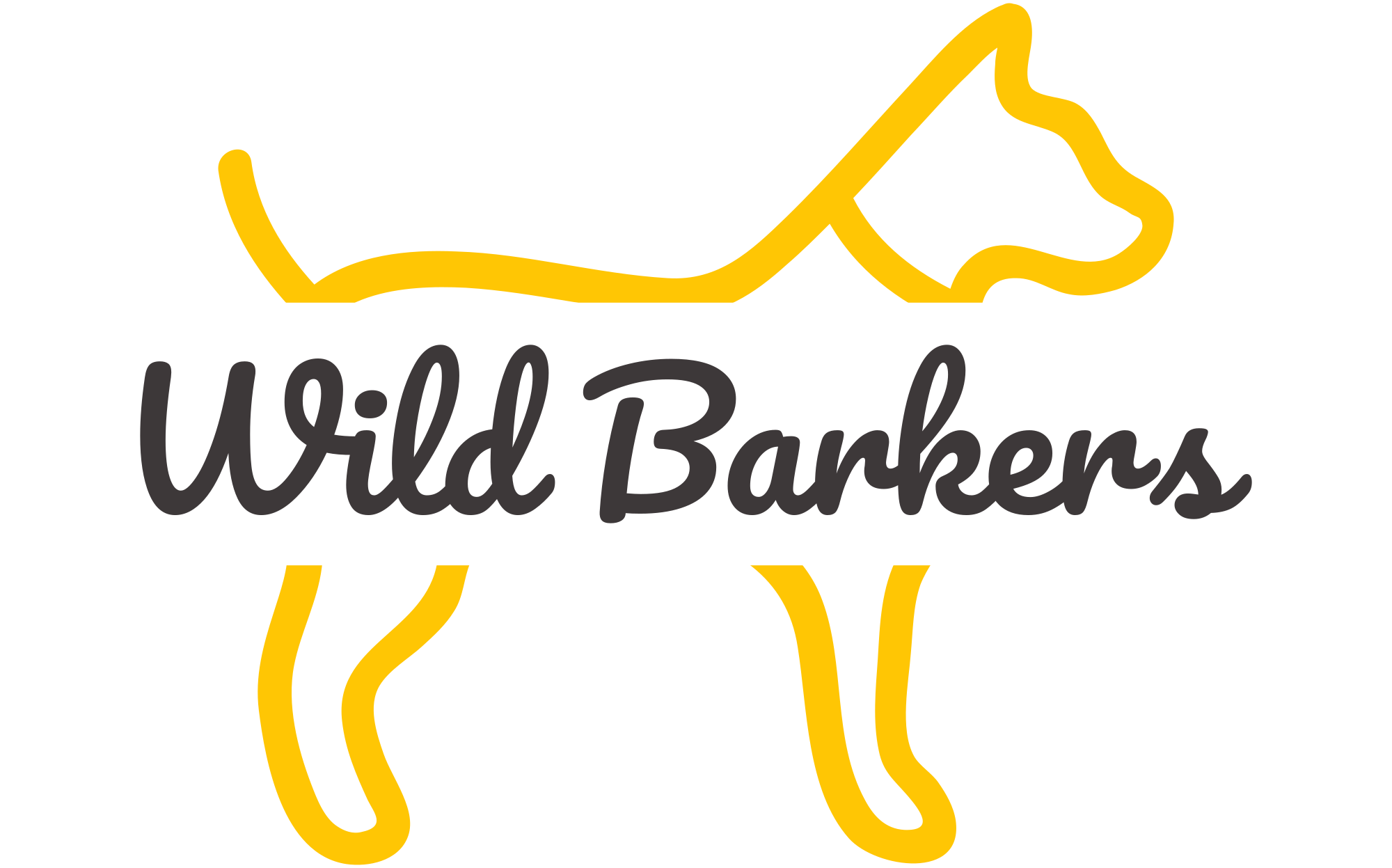

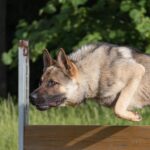
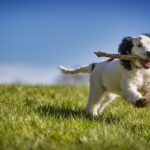

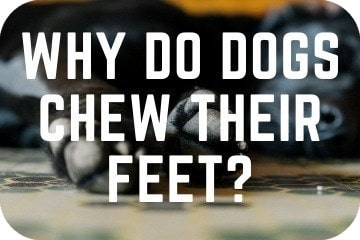
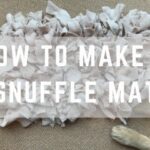
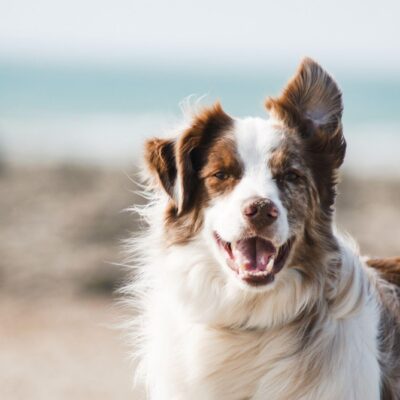
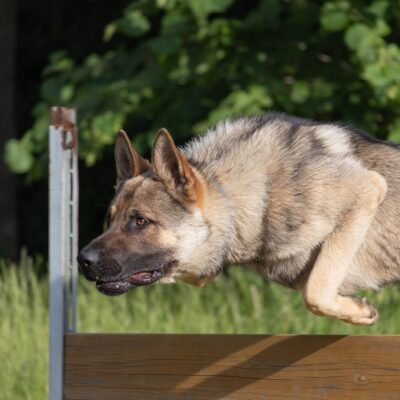
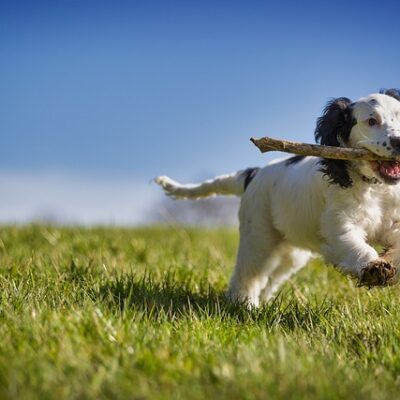
No Comment! Be the first one.